Collecting beer cans as a child has evolved into a 25-year passion for Wernersville resident Dave Doxie.
The beer can enthusiast has an extensive breweriana collection spanning 100 years of cultural history.
“It’s an obsession,” declares Dave of his love for breweriana, which refers to any article containing a brewery name or brand name. “I live, eat and breathe it. It’s a great, exciting hobby. You have something other collectors want. That’s a good feeling.”
How It All Began
Dave’s interest in beer cans began at the height of the beer can collecting craze in the ’70s. “Beer can collecting was as popular as collecting baseball cards,” Dave recalls.
Breweries flooded the market with specialty or commemorative beer cans to woo collectors.
Dave fondly remembers going to a beer distributor with his dad in 1976 to purchase cases of Schmidt’s bicentennial commemorative Betsy Ross beer cans with his allowance money and immediately emptying them for his collection. He also remembers stocking up that same year on beer cans from the Reading Brewing Company when it announced its closure (The label has since been revived by Ruckus Brewing).
The young hobbyist even traded beer cans with classmates at Whitfield Elementary School in the Wilson School District. “You could still smell the beer in them, and it was probably dripping down on us, but we didn’t even know it,” he laughs.
During the same decade, Dave and his older brother Floyd went dumpster diving and explored the sides of back roads for older, rusty beer cans. “Some of the cans we found held up pretty well,” Dave admits.
He and his brother were like true archeologists, marveling at their discoveries of preserved pieces of history. “They’ve been in the ground for 40 or 50 years, and we found them,” he shares. “It was like finding treasure in a safe.”
With their prized possessions, he and his brother created a beer can pyramid in their shared bedroom. “We had one wall dedicated to the cans – from the shelf to the ceiling,” he reminisces.
Expanding His Collection
As Dave matured, so did his collection. While his brother lost interest in breweriana, Dave – who says he “took the torch and carried it on by myself” – expanded his collection in the 1990s to include more valuable and rare beer cans and signage.
Dave graduated from rummaging through dumps for rusty cans to searching flea markets, antique markets and trade shows for grade 1 or better beer cans. In the trading world, cans are graded on a scale of 1 to 5 (including pluses and minuses), with 1+ being in the best condition.
Knowing Dave’s passion for beer collectibles, friends and acquaintances began contacting him – and still do – whenever they found old beer cans inside of walls during home renovations.
“People find cans inside the walls of homes built in the ‘30s and ‘40s,” he says. “It’s like they were in a time capsule.
“How did they survive?” he wonders. “They weren’t designed to be saved or collected. They were designed to be made and tossed.”
To his growing collection, Dave added rare and valuable conetops – short-neck steel cans shaped like a bottle that were manufactured in the ‘30s and ‘40s – and flattops – heavy cans produced in the ‘50s that could only be opened with a churchkey, a bottle opener used for creating two holes in the can’s top.
He also began collecting a variety of vintage beer signs: reverse on glass, tin over cardboard (called TOC in the breweriana world), pulp backs, neon, composition and plastic.
“Before Prohibition [1920-1933], there was no TV, so breweries put a lot of money into signage advertising,” he notes. “Post-Prohibition, advertising really started taking off. Back then, things were colorful and beautiful. Today’s ads aren’t near as nice.”
Dave’s favorite signs are TOC for their colorful raised or beveled lettering. One of the most collected types of signs among hobbyists, TOC signs were popular before and after Prohibition but were replaced by cheaper, more disposable cardboard signs in the ‘60s.
Throughout the ’90s, Dave’s hobby flourished. He began specializing in memorabilia from Reading-based breweries Old Reading and Sunshine. He later developed a taste for other Pennsylvania breweries, including Esslingers in Philadelphia, Yuengling in Pottsville and Wacker in Lancaster.
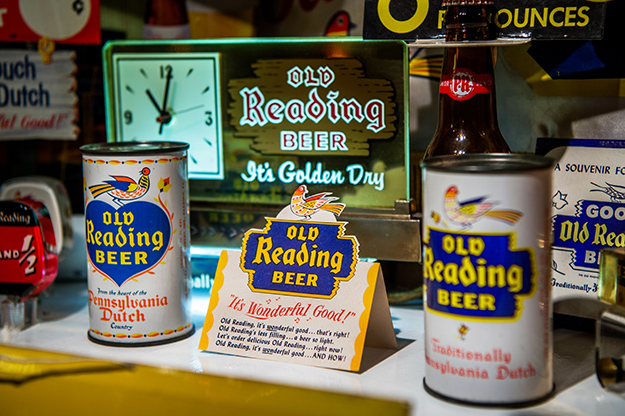
Internet Changed the Game
In the late ’90s and early 2000s, the Internet brought an easier outlet for collectors to buy and sell items – but at the same time eliminated the “thrill of the find.”
“Internet killed the collecting part,” Dave reveals. “It’s not as fun as finding something early on a Sunday morning. It’s more fun to find it at a flea market at a stand than on eBay.”
He also misses finding a rare, valuable piece from a seller who doesn’t realize the fortune in his hands.
“I could buy something for $10 at the flea market and now I pay $100 online. Now, everyone is knowledgeable and can do their research on Google.”
Always on the Hunt
Dave peruses the Internet, attends estate sales and on occasion goes to auctions, like Renningers Antique Market in Kutztown and Stoudt’s Antique Mall in Adamstown, for his chance to snag the next best thing for his collection.
On finding the perfect piece, he says, “It’s being at the right place at the right time.”
With all the rewards to his hobby come a few disappointments in the search. “I might drive three hours to an estate sale and won’t get a piece,” he reveals. “That’s the hard part, but it’s part of the game. Estate sales are very competitive.”
A Proud Member of the Breweriana World
Dave bonds with fellow breweriana enthusiasts through the Brewery Collectibles Club of America (BCCA) and the Eastern Coast Breweriana Association (ECBA).
BCCA – originally called the Beer Can Collectors of America – was founded in 1970. Within its first year, the club had 304 members from 17 states and numerous countries. At the height of the beer can and breweriana collection trend in the late ’70s, the club boasted nearly 12,000 members, including school-aged kids.
Dave fits the BCCA’s description of its core members who have remained with the club, saying they are “collectors with stronger passion, larger collections and greater interest in the survival and growth of the club.”
Today, the club has 4,000 members. “With the craft beer and microbrewery craze, interest is taking off again,” Dave adds.
A BCCA member “for as long as I can remember,” Dave enjoys attending the club’s annual CANvention when his schedule allows. He also attends other annual breweriana shows, including the Blue & Gray show in Fairfax, Va., and the Spring Thaw Brewery Collectibles Show in Mechanicsburg.
“It’s great to get together and meet new friends,” Dave says.
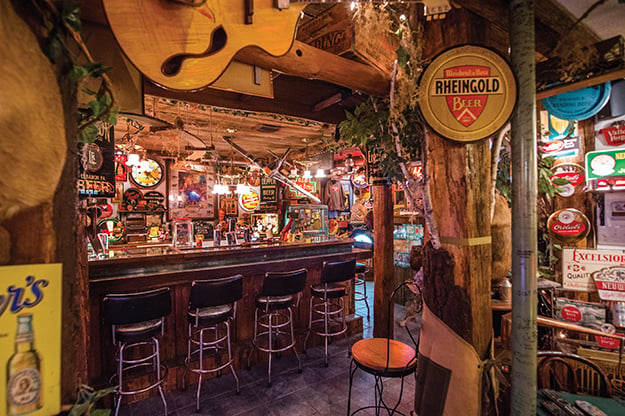
The Man Cave
Entering Dave’s basement is like walking into a museum. His hundreds of breweriana collectibles on display tell the history of the evolution of beer in the United States. Beer cans, conetops, flattops, signage, back bar figurines, clocks, coasters, matchbooks, calendars, tap knobs, posters, beer labels, photographs and trays decorate shelves, glass cases and walls from top to bottom.
“Everyone says I should charge admission to come down here,” he jokes, “or open a museum or a bar. People always say, ‘You’ve got to see Dave’s basement.’”
He takes great pride in his beloved display. “People compliment me on how well it’s organized and not junked up,” says Dave, who resides with his wife Kim and daughter Sarah.
The beer enthusiast enjoys sharing stories with visitors about his unique collection. "I know where I was and when I got every piece and who I bought it from,” he attests. “I’m no Rain Man – I can’t remember phone numbers – but I can remember all the details about my collection.”
Dave and guests alike enjoy viewing the vintage photos of yesteryear that adorn the basement walls and display cases. The photographs feature patrons drinking beer, some of whom are standing next to or holding original items Dave now owns in his collection.
“I look at old photos of people back then and think, ‘They have no idea what they’re holding in their hands and what it’s worth in 2016.’ They would fall over in their graves,” he says.
When Dave purchases a new piece, he carefully plans its new home in the basement. “It could take me a whole day to hang a new sign,” he says. “Something new could sit there for a long time before I figure out where to put it. It’s a long process.”
Dozens of other gems add to the man cave’s nostalgic look and feel: an antique mahogany phone booth, a vintage ‘20s GE refrigerator, a model train that runs on a track around the ceiling, hanging antique lanterns and stuffed wildlife nestled among the collection, to name a few.
His man cave wouldn’t be complete without three flat-screen TVs.
His Most Cherished Piece
While Dave values every one of his collectibles, he has a stand-out favorite: a large Sunshine beer poster from the ‘40s, featuring a main center image of a man holding a beer sitting next to a hunting dog. Smaller images of hunting dogs create a border around the larger center picture.
“It’s really cool and colorful,” Dave says of his cherished piece. “It reminds me of a Norman Rockwell painting. It’s not the rarest piece, but it catches my eye every time I come downstairs. Beer was marketed to hunters back then. It was a clever way of advertising.”
Sharing His Memorabilia
For those who aren’t lucky enough to catch a glimpse of Dave’s rare collection, he sometimes participates in public events to showcase some of his memorabilia. In 2009, dozens of his pieces were on display at a popular six-month beer exhibit at the Reading Historical Society.
He participated in a recent Virginia beer show, where the public voted for their favorite piece. Dave’s Pabst Old Tankard Ale dome light was runner-up, receiving the second most votes.
“You get a case of beer and bragging rights,” Dave says of his near win.
A Collection Close to His Heart
Nothing will come between Dave and his collection, not even $1 million, he vows.
“If you’re a true passionate collector, it’s not about the money,” he explains. “You can always get money, but you can’t get neat stuff.”
Dave has spent countless hours watching and waiting for the perfect piece to sell, from scanning advertisements in the newspaper to attending early-morning auctions.
“Anyone can take that money and buy a collection, but I earned this,” he says.
For Dave, all the heart, soul and time he has invested in his breweriana collection – 25 years in the making – is worth far more than any amount of money.

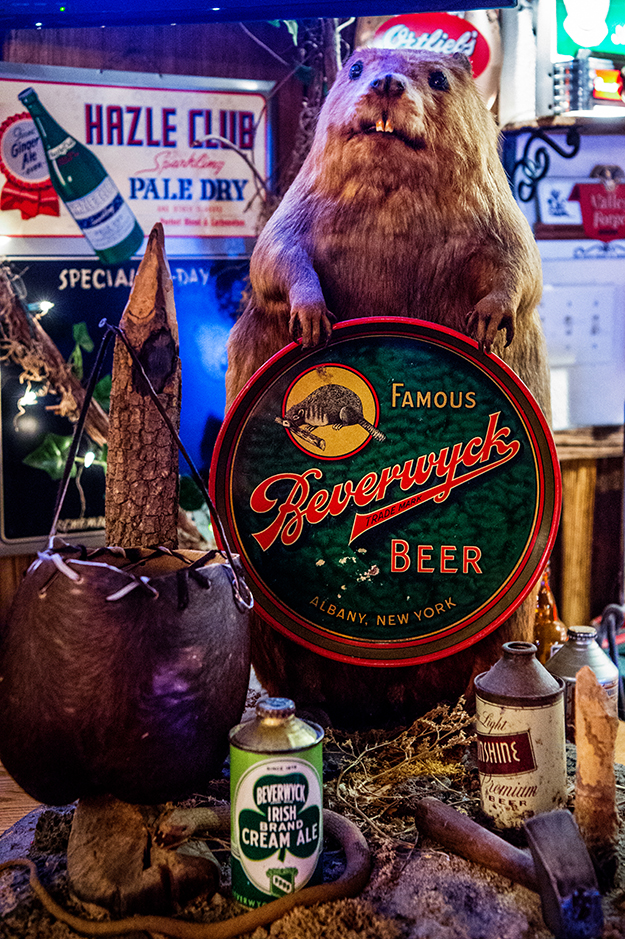
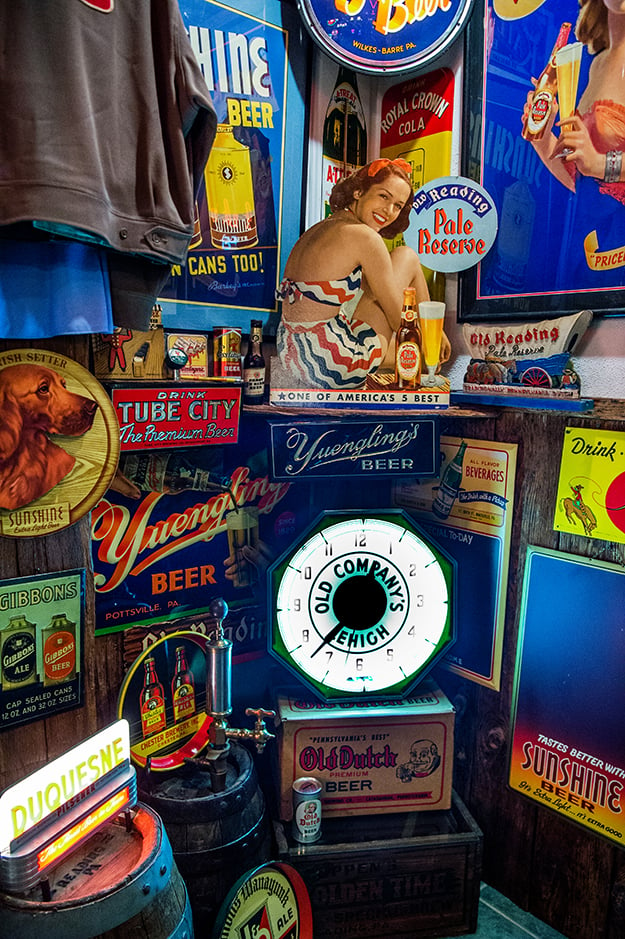
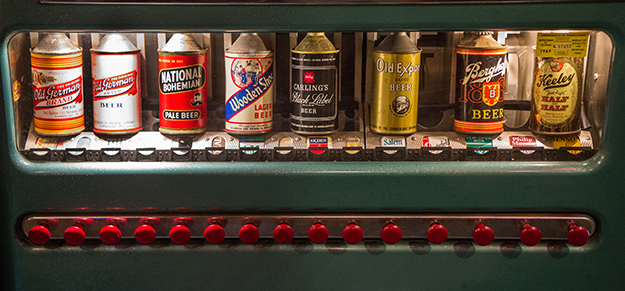
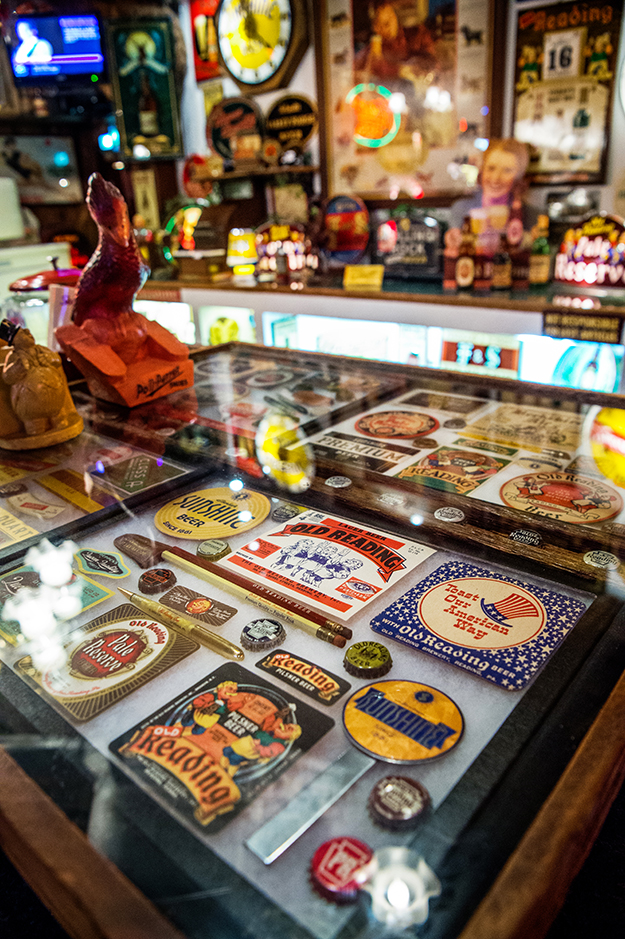
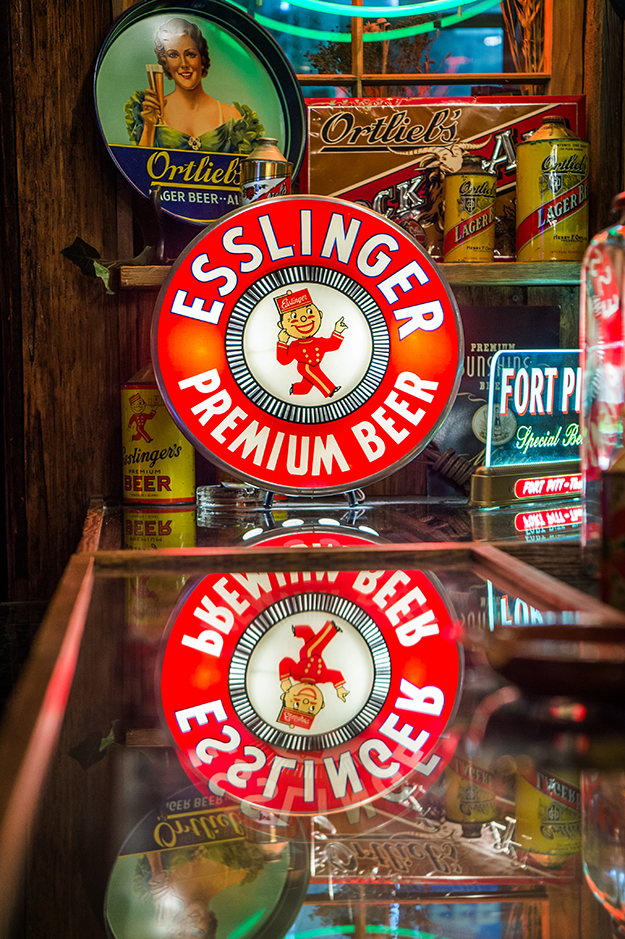
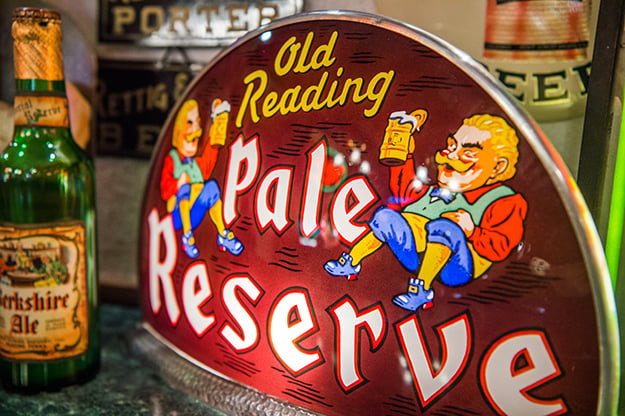
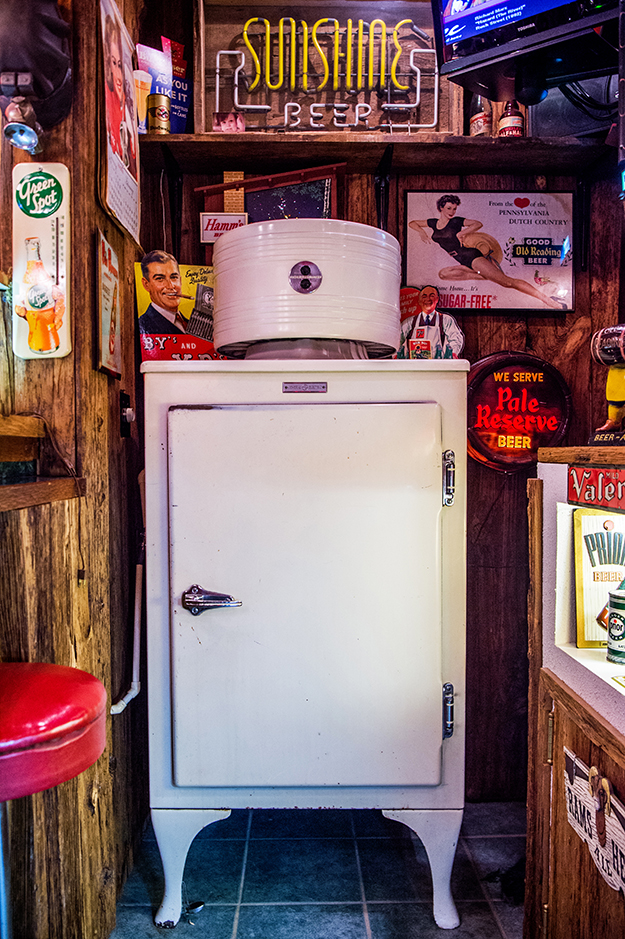
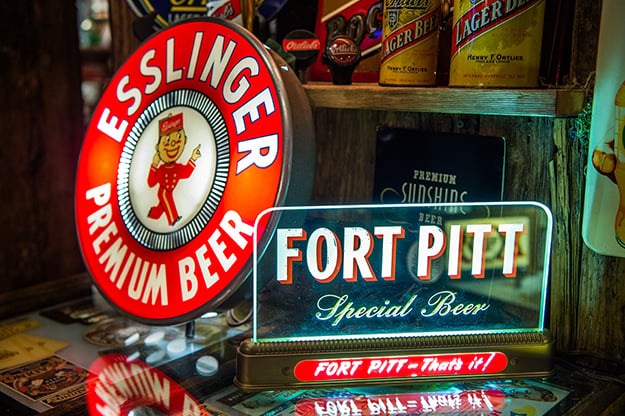
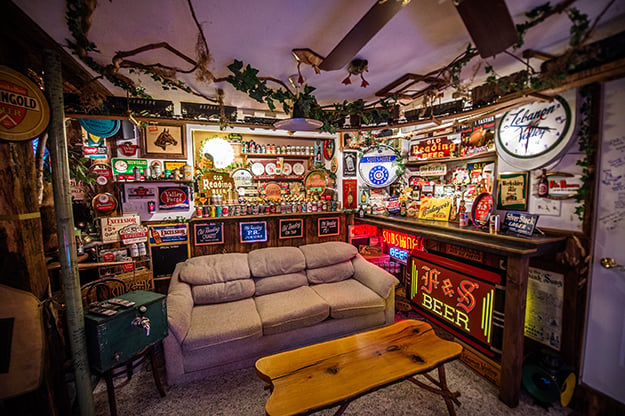
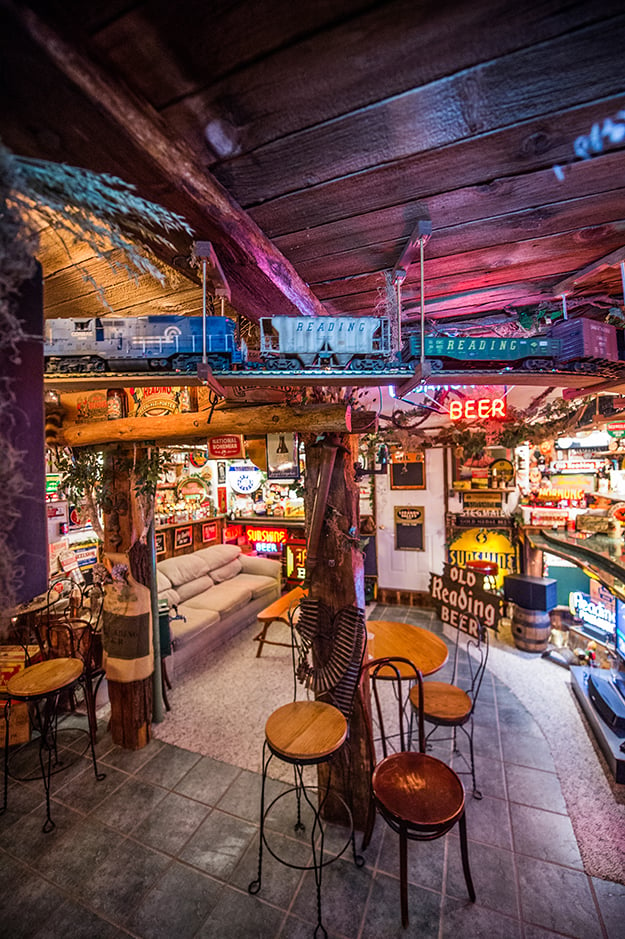

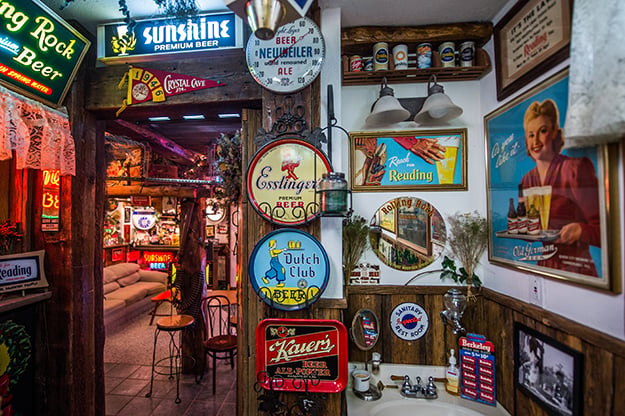
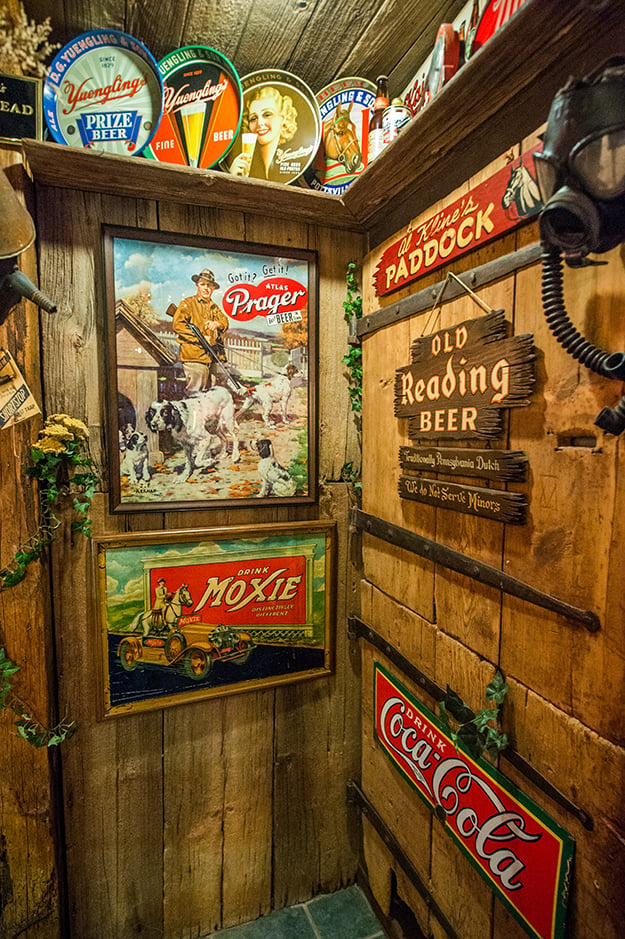
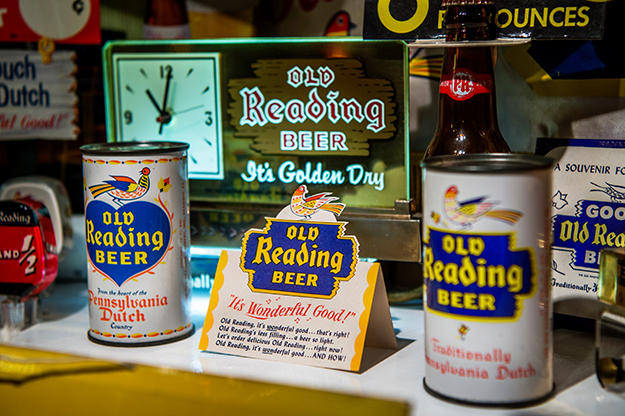
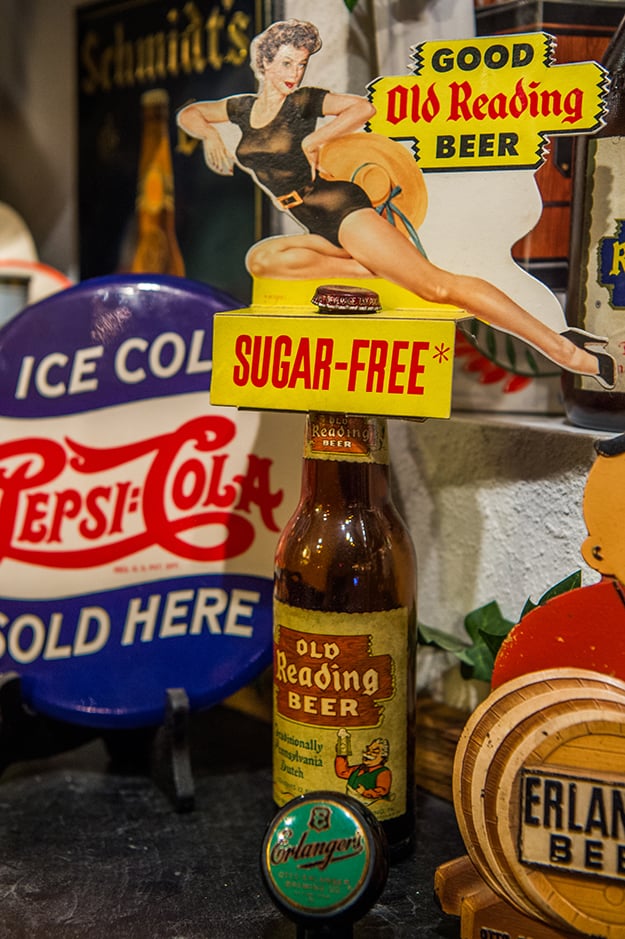
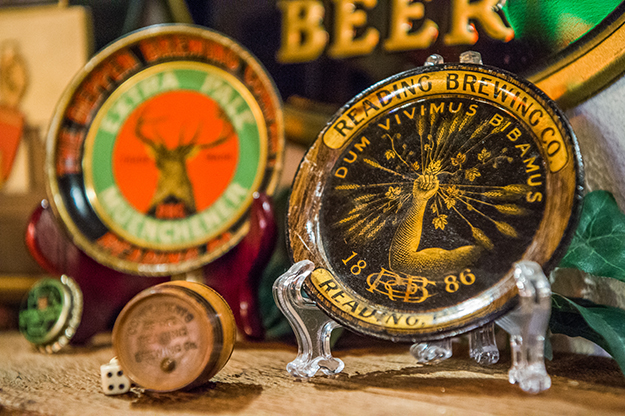
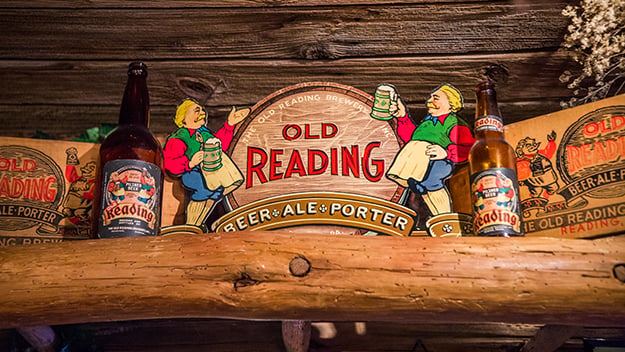
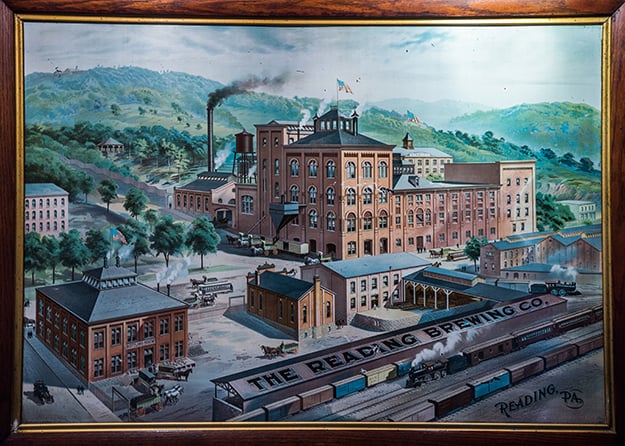
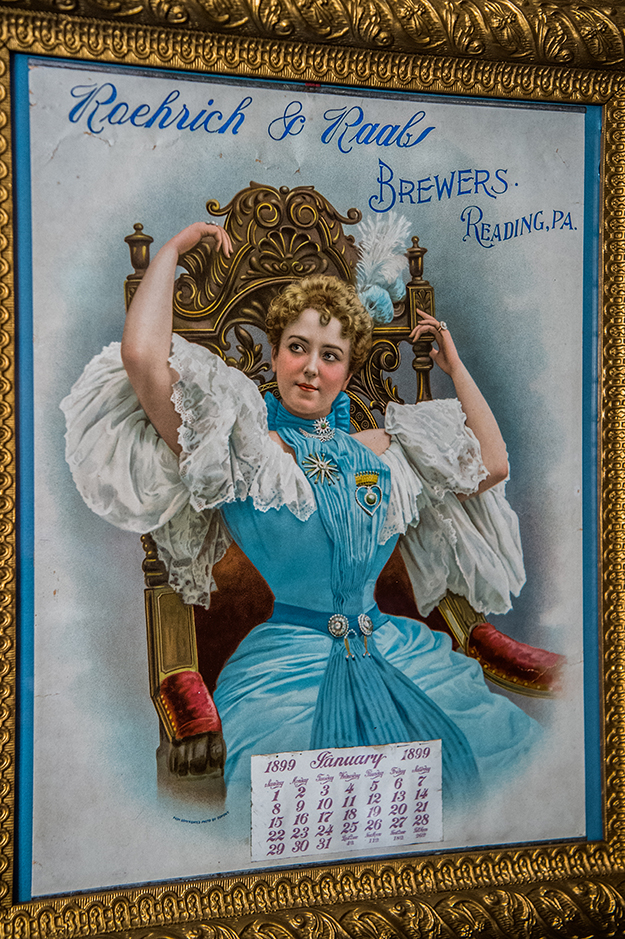
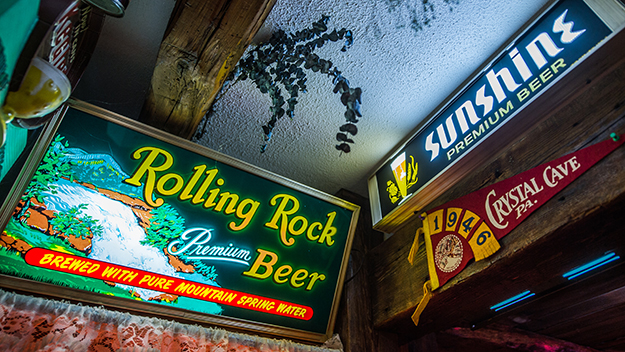
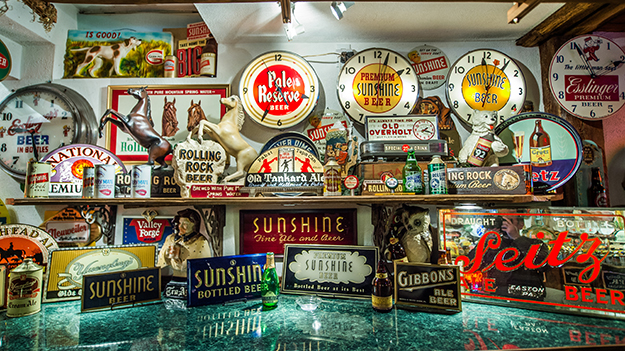
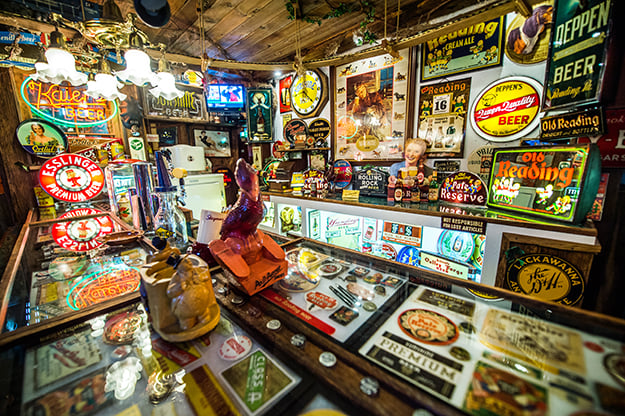
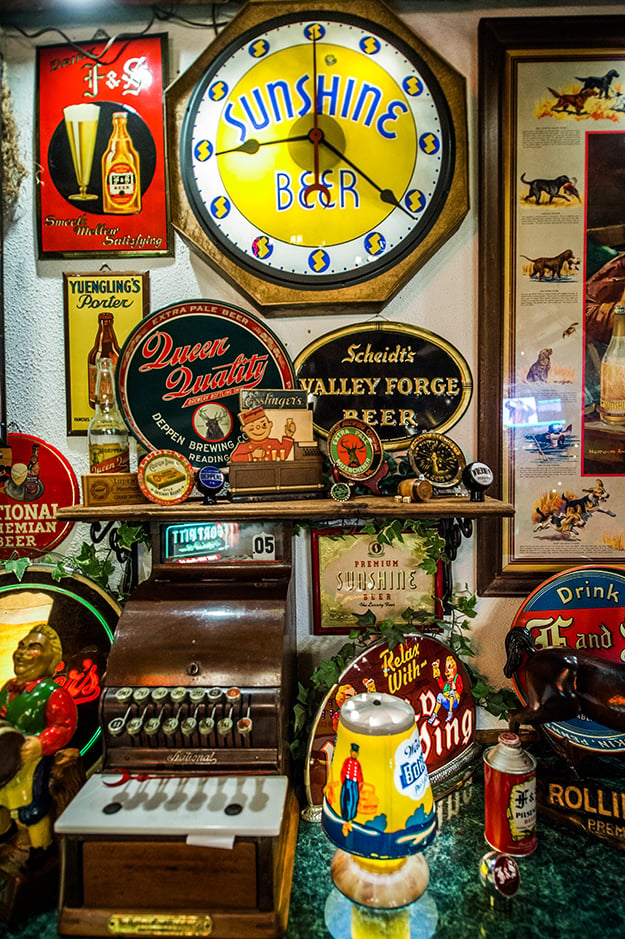
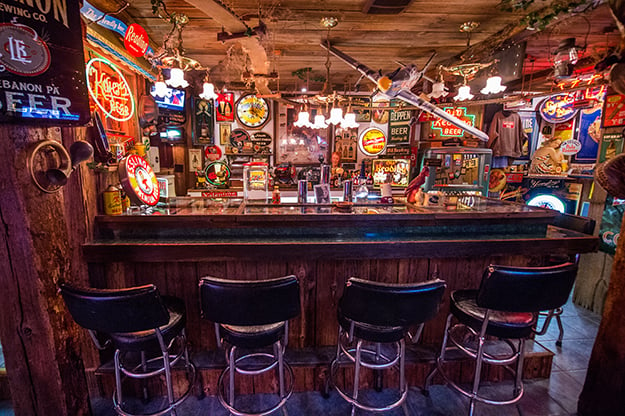
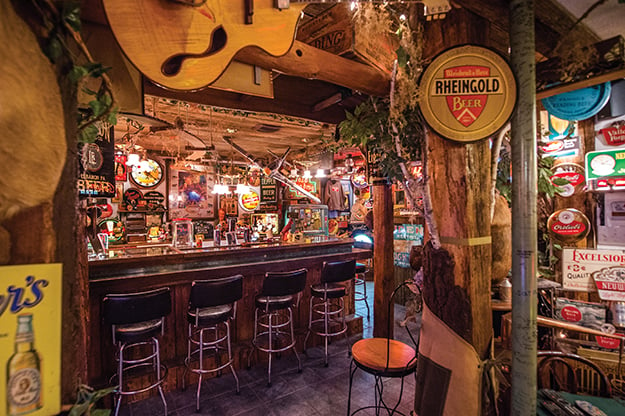
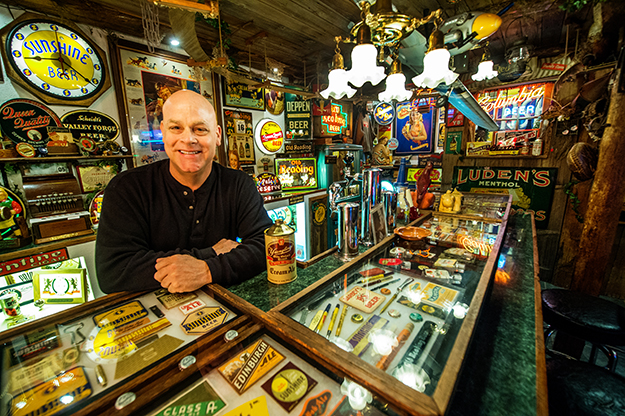
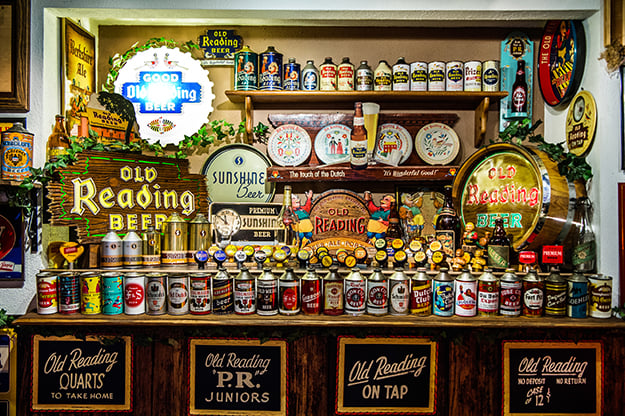
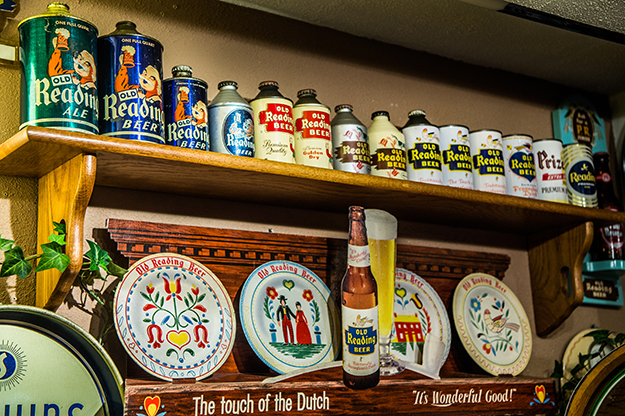
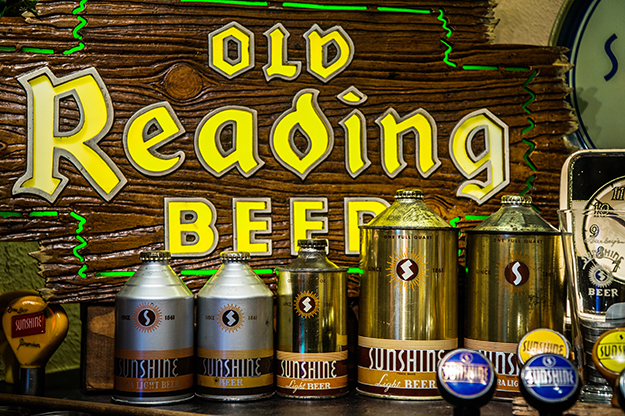
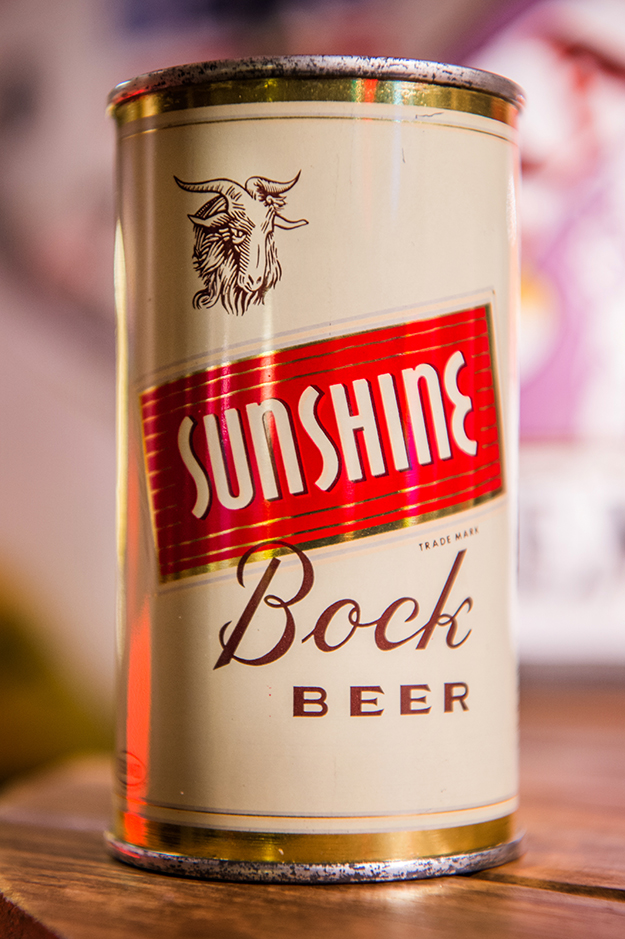
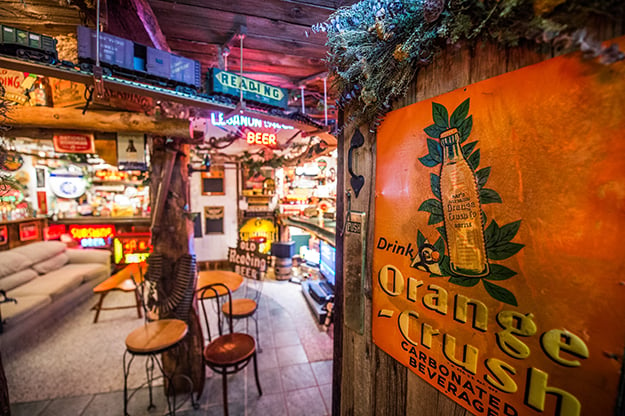
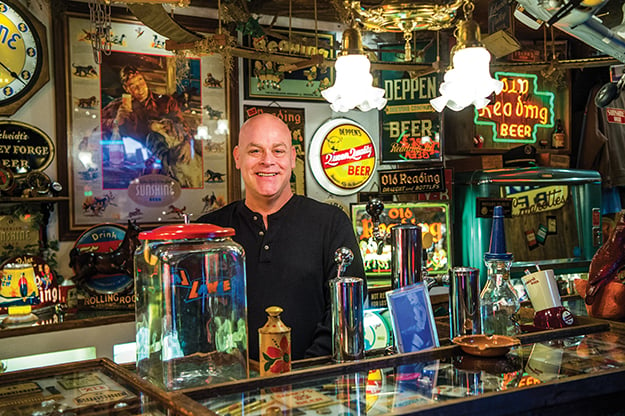
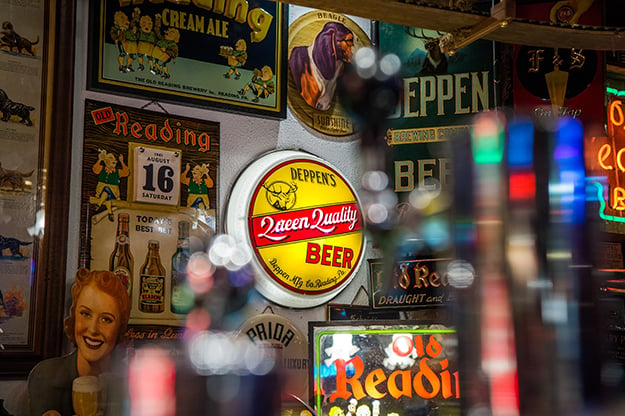
By Kandace Wertz | Photos by John A. Secoges, Secoges Photographics
















